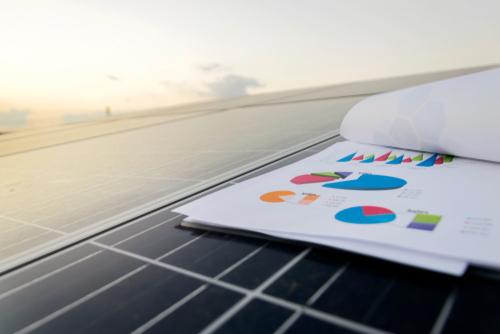SEIA, Wood Mackenzie forecast 40 percent growth for solar market through 2027 thanks to Inflation Reduction Act

With tariffs paused and the passage of the federal Inflation Reduction Act secured, a new U.S. Solar Market Insight for the third quarter of 2022 from the Solar Energy Industries Association (SEIA) and Wood Mackenzie is predicting a rosy 40 percent growth for the industry through 2027.
Equivalent to 62 GW of additional solar capacity, this forecast was a massive leap over baseline projections following the slowdowns of the second quarter. In fact, over the next five years, the utility-scale sector will carry the solar industry’s growth through 162 GW of new capacity. When cumulative solar installations from all market segments are taken into account, the organizations predicted nearly tripled growth: 336 GW by 2027.
Currently, the domestic industry has about 129 GW in all.
The authors specifically praised the Inflation Reduction Act. The report’s lead author – Michelle Davis, principal analyst for Wood Mackenzie – said the act had given the solar industry the most long-term certainty it has ever had.
“This report provides an early look at how the Inflation Reduction Act is going to transform America’s energy economy, and the forecasts show a wave of clean energy and manufacturing investments that will uplift communities nationwide,” SEIA president and CEO Abigail Ross Hopper. “With this incredible opportunity comes a responsibility to clearly address concerns over forced labor and ensure that we have ethical supply chains throughout the world.”
Such gains do not mean the future is without its share of hiccups. Solar installation forecasts for 2022 have dropped to the market’s lowest total in three years, to 15.7 GW. This was largely spurred by a prohibitive tariff investigation undertaken by the U.S. Commerce Department. While the White House subsequently paused new solar tariffs for two years beginning this June, the passage of the Uyghur Forced Labor Prevention Act (UFLPA) had the downside of detaining various solar modules, extending supply chain issues.
The report noted that the UFLPA, despite its humanitarian intent, could end up limited solar deployment through next year due to module availability constraints and may delay more near-term efficacy of the Inflation Reduction Act. This comes at a time when rooftop solar is at record highs. The new legislation is expected to encourage another 7.3 GW of residential solar capacity over the next five years and improve grid reliability through a new standalone storage tax credit.
“Ten years of investment tax credits stands in stark contrast to the one-, two-, or five-year extensions that the industry has experienced in the last decade. It’s not an overstatement to say that the IRA will lead to a new era for the U.S. solar industry,” Davis said.
Even with the hits, though, the report noted that solar accounted for 39 percent of all new electric generating capacity additions for the United States throughout the first half of 2022.
